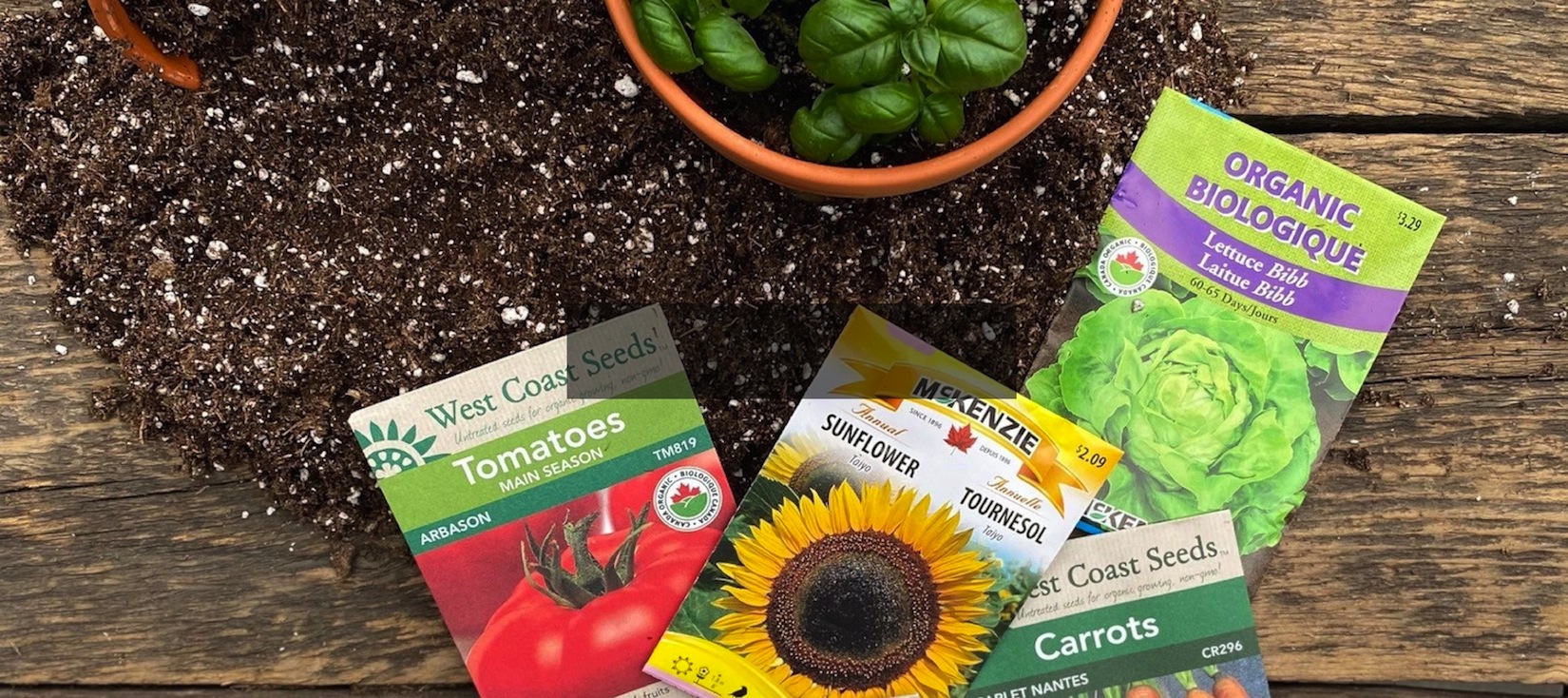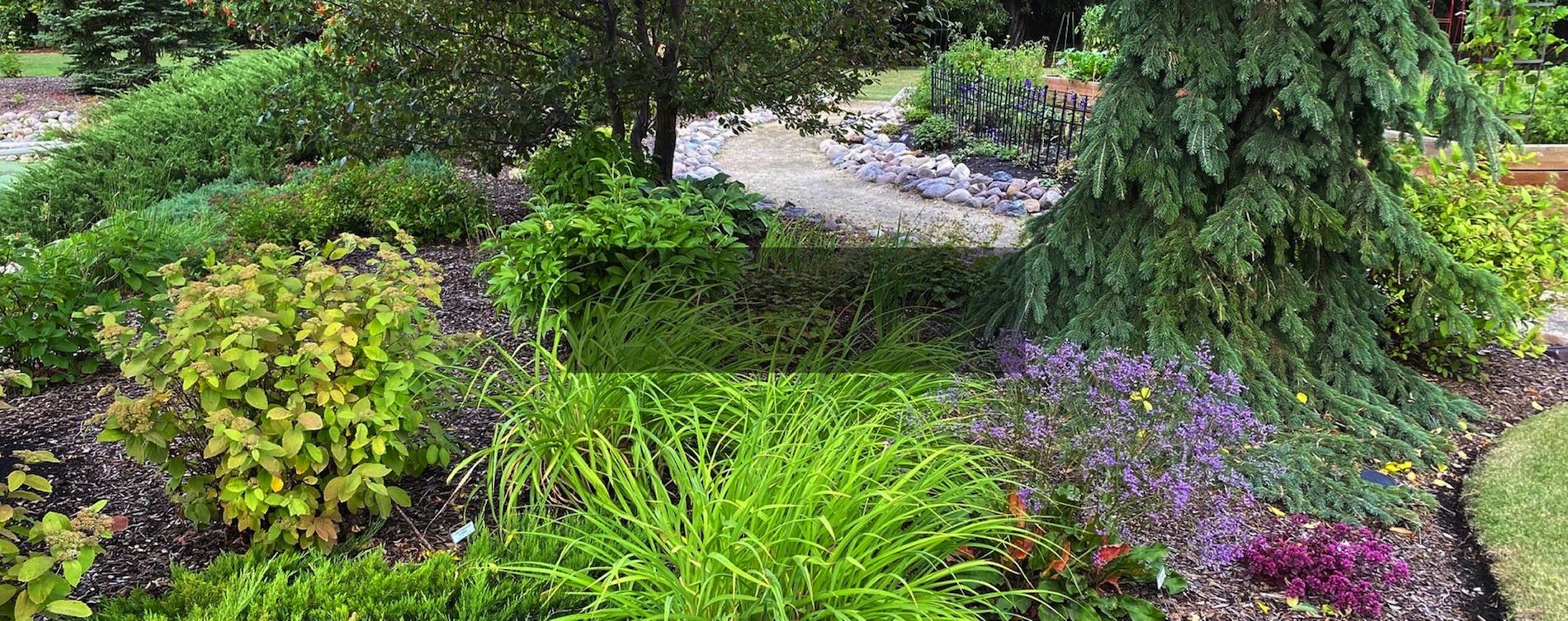What's Bugging Your Perennials
Insect Pests

Ants
Plants affected: Ants are mostly beneficial, feeding on other insects and decomposing plant material. They do not feed directly on plants, but rather on plant debris, rotting wood. However, in great numbers, ants can disrupt turf with large hills
Symptoms: Will see ants scurrying along, may see hills in lawn if population is high
Cultural Control:
• Try to locate the hill; if there’s not a clear sign of a hill, try to watch ant activity. You will see them coming and going from a general direction. Poke holes deep into turf in that area, and drench with an extensive amount of water
• Powder areas of activity heavily with diatomaceous earth
Chemical Control:
• Drench hills/tunnel areas with Malathion
• Poke holes and inject with Doktor Doom Residual or Doktor Doom

Aphids
Plants affected: Numerous indoor and outdoor plants
Symptoms: Severe infestations will cause curling/twisting of foliage, flowers to wilt and drop
Life Cycle: Eggs hatch on host plants in spring, these nymphs give birth to ‘daughters’, within days the daughters give birth – up to 30 generations per summer
Cultural Control:
• Ladybird beetles/larvae, lacewings are natural predators
• Strong jet of water to knock aphids off plants
Chemical Control: Doktor Doom House and Garden, End All, Ambush

Columbine Leafminers
Plants affected: Various species of columbine
Symptoms: Leaves have winding tunnels through them
Life Cycle: Eggs are laid in early spring, larvae hatch and feed in between leaf layers, causing mines
Cultural Control: Clip affected leaves
Chemical Control: Ineffective

Columbine Sawfly
Plants affected: Various species of columbine
Symptoms:
• Leaves are skeletonized
• Can cause complete defoliation
Life Cycle:
• Eggs are laid on underside of leaves in April / Early May
• Hatch and feed in the outer edge leaves leaving only the veins
• Pupate and emerge into a wasp like fly
Cultural Control:
• Hand pick
• Diatomaceous earth
Chemical Control: Insecticidal soap, Ambush, Doktor Doom House and Garden

Daylily Midge
Plants affected: Daylily
Symptoms: Buds are deformed, streaked with purple
Life Cycle:
• Adults overwinter in soil, emerge in spring
• Adults lay eggs in developing buds. Larvae feed on buds, distorting them and leaving purple streaking. Unopened buds eventually drop to the ground and larvae emerge, overwinter in soil
Cultural Control: Remove affected buds and discard in garbage or burn
Chemical Control: None available

Delphinium Worms
Plants affected: Delphinium
Symptoms: Rolled, twisted leaves with black markings
Life Cycle:
• Young caterpillars overwinter in hollow stems of old plants, emerge in spring to feed on new growth. Early summer caterpillars pupate in cocoons on undersides of leaves then adults emerge a few weeks later
• Females lay eggs in July and young caterpillars feed amongst buds before hibernating
Cultural Control:
• In fall, cut delphinium stems to soil level, do not leave hollow stems for caterpillars to overwinter in
• Remove affected leaves
Chemical Control: Apply Diatomaceous Earth or Doctor Doom House and Garden in EARLY spring, when plants are about 6-8” tall

Flea Beetles
Plants affected: Numerous perennials and annuals
Symptoms: Numerous holes in foliage, about the size of a pinhead
Life Cycle: Overwinter in soil beneath leaf debris, emerge in spring. Adults feed on foliage, mate and lay eggs
Cultural Control: Clean up leaf debris and weeds in autumn
Chemical Control: Spray adult beetles in spring before they lay eggs; Ambush, Dr. Doom House and Garden

Leafhoppers
Plants affected: Virginia Creeper, Grape Vines most common, can affect other perennials
Symptoms: Hazy, speckled leaves from feeding, clouds of insects flit about when disturbed
Life Cycle:
• Some species lay eggs in fall to overwinter on woody stems and vines, eggs hatch in spring and feed on plants
• Others migrate for the winter, and return as adults in the spring to lay eggs in host plants
Cultural Control:
• Consistent misting of foliage with strong jets of water can knock down a certain amount of the pests
• Late fall or early spring applications of horticultural oil to smother adults
Chemical Control: Apply diatomaceous earth or doctor doom house and garden in EARLY spring, when plants are about 6-8” tall. Once grape fruit is present, diatomaceous earth or ambush.

Scarlet Lily Beetles
Plants affected: Lilies
Symptoms: Foliage and flowers chewed on, bright orange eggs on undersides of leaves
Life Cycle: Overwinter as pupae in the soil, adults emerge in spring. Adults lay eggs on undersides of leaves, eggs hatch in about 1 week. Larvae feed on both foliage and flowers May to September
Cultural Control:
• When lilies just emerging from soil, check for eggs. Squish eggs on undersides of leaves
• Remove insects, drop into bucket of soapy water
Non-chemical Control: Diatomaceous earth; dust soil and plants early when lilies emerging
Chemical Control: Doktor Doom House and Garden Residual spray – apply early in spring as lilies are emerging

Slugs
Plants affected: Perennials, annuals
Symptoms: Ragged holes chewed in leaves, slime trails on leaves
Life Cycle:
• Overwinter as eggs in soil
• Hermaphrodite; every slug can lay eggs. Eggs laid in batches of 10-50 in moist soil
Cultural Control:
• Till soil to disturb eggs, expose eggs to natural predators
• Spread diatomaceous earth or other gritty substances under plant leaves
• Spread iron based slug pellets (Sluggo or Safer’s) at base of plants, under foliage
• Beer traps; dishes filled with beer, set at soil level, may attract and drown slugs
Chemical Control: Metaldehyde based pellets

Spider Mites
Plants affected: Numerous indoor and outdoor plants
Symptoms:
• Stippling—tiny dots in foliage.
• Yellowing of foliage—’haze’ on foliage
Life Cycle:
• Can overwinter in various stages under debris or bark on host plants, in greenhouses.
• Become active in spring as foliage emerges
Cultural Control:
• Lacewings are natural predators
• Keep plants misted (they prefer dry conditions)
• Fall debris cleanup
Chemical Control: End All, Doktor Doom House and Garden, Ambush

Spittle Bugs
Plants affected: Numerous annuals and perennials
Symptoms: ‘Spit’ on plant—bug is hidden underneath the foam
Life Cycle:
• Eggs overwinter on plant material, hatch in spring, nymphs feed on plants
• Adults lay eggs in late summer
Cultural Control: Spray plants with strong jet of water
Chemical Control: Not necessary

Stink Bugs
Plants Affected: Numerous; trees, shrubs, perennials, annuals
Description:
• Various forms/colours will be seen—will generally have a large triangular plate on their back
• Omit foul smelling substance when disturbed
Life Cycle: Adults overwinter in plant debris/in soil. Emerge May-June, eggs are laid in June-July, from egg to adult takes about 25 days
Control:
• Though found in large #’s, rarely cause damage to the extent that warrants spraying with insecticide
• Actually a predator of Colorado potato beetles. Each nymph can consume over 250 eggs

Thrips
Plants affected: Numerous indoor and outdoor plants
Symptoms: White blotches or streaks on foliage/blooms – damage is the size/shape of a ‘hyphen’
Cultural Control: Remove affected blooms and leaves
Chemical Control: End All, Doktor Doom House and Garden
Diseases

Black Spot
Plants Affected: Numerous
Symptoms: Small black spots appear on leaves and/or flowers. Damage is cosmetic
Life Cycle:
• The fungus overwinters on infected leaf debris from the previous season
• Spores travel with wind and colonize on wet foliage
Controls – Cultural or Non-Chemical:
• Affected leaves or flowers can be pruned out and discarded. DO NOT COMPOST
• Keep plants well-spaced to improve air circulation
• Water in the morning and avoid wetting the foliage
• Keep affected plants well-watered and fertilized
• Cut back all dead foliage to ground level in fall to prevent reinfection next year
Controls – Chemical:
• Safer’s Defender can be sprayed in 7 day intervals as a preventative on plants that have been previously infected
• Apply garden sulphur at 7-10 day intervals starting early June, to guard against spores

Botrytis Blight
Plants Affected: Peony, Strawberry, numerous others
Symptoms:
• Plants wilt when fungus enters stems at soil level; black rotten patches and/or gray mold is sometimes seen
• Flower buds may abort, turning brown before opening
• Damage is cosmetic and does not usually cause death
Life Cycle:
• Fungus overwinters on infected plant debris from the previous season, or in the soil
• Spores can travel on the wind or in splashing water, and colonize on decaying plant matter and wet flowers or foliage
Controls– Cultural or Non-Chemical:
• Ensure watering is done first thing in the morning
• Keep plants well-spaced to promote proper air flow
• Plant in well-drained soil
• Prune out and discard any badly affected portions to prevent further spread
• If the problem persists for several years in a row, relocate plants to a different area
• Strawberries should be grown with a layer of mulch underneath and surrounding plants so fruit does not come into contact with the soil
• Cut back all dead foliage to ground level in fall to prevent reinfection next year
Controls – Chemical: No chemicals available at this time

Clematis Wilt
Plants Affected: Clematis
Symptoms: Sections or the whole plant will suddenly wilt and collapse, often turns black in a very short amount of time
Life Cycle:Fungus enters the plant through broken or damaged stems, typically near the ground, usually via splashing water
• Spores will be produced from infected plant tissue
Controls – Cultural or Non-Chemical:
• Cut down affected stems to ground level
• Plant at proper depth for hybrid types, to give vines extra support; plant so top of rootball is 4″” deeper than soil surface
• Plant in well drained soil fortified with lots of organic material
• Keep plants properly staked etc to avoid damage to the stems; be careful when cultivating around plants
Controls – Chemical: No chemical controls are available

Downy Mildew
Plants Affected: Numerous, especially Arctic and Moss Phlox, Rock Cress, Whitlow Grass, other groundcover/alpine type perennials
Symptoms:
• Gray moldy, fuzzy spots appear on foliage, which often also turns yellow and may become mushy/rotten in severe cases
• Older varieties are more susceptible
• Not as common as powdery mildew
Life Cycle:
• Fungus overwinters on infected leaf debris from the previous season
• Spores travel on wind and infect wet foliage
• Weeds are frequently responsible for harbouring and spreading the disease
• Choose disease-resistant varieties
• Clip off affected portions
• Keep plants well-spaced to improve air circulation
• Water in the morning only
• Divide plants every 3-4 years to maintain vigour and disease resistance
• Plant in full sun
• Keep beds well-weeded
Controls – Chemical:
• Safer’s Defender can be applied as a preventative in 7 day intervals, beginning in June
• Garden Sulphur can be dusted on affected plants to suppress spores

Powdery Mildew
Plants Affected: Numerous, especially Beebalm, Columbine, Delphinium, Goldenrod, Jacob’s Ladder, Lungwort, Meadowsweet, Speedwell, Stonecrop, Summer Phlox, and others
Symptoms:
• White powdery spots, yellowing leaves
• Plants cannot manufacture as much food as they need; severe infestations can kill or severely stunt plants
Life Cycle:
• Fungus overwinters on infected leaf debris from the previous season
• Spores travel on wind and infect wet foliage
• Most prolific during summer weather where days are hot and dry and nights are cool and humid
• Weeds are frequently responsible for harbouring and spreading the disease
Controls – Cultural or Non-Chemical:
• Keep plants well-spaced to improve air circulation
• Clip off infected sections
• Perennials that are badly infected can even be cut back to ground level and allowed to regrow
•Keep well-watered and fertilized; liquid kelp and high potassium fertilizers aid in recovery
• Water in the morning only and avoid wetting the foliage
• Cut back all dead foliage to ground level in fall to prevent reinfection next year
• Keep beds well weeded
• Natria Bio-fungicide can be applied as a preventative in 5 day intervals, beginning in June
Controls – Chemical:
• Safer’s Defender can be applied as a preventative in 7 day intervals, beginning in June
• Apply garden sulphur at 7-10 day intervals starting early June, to guard against spores

Red Leaf Rhubarb Disease
Plants affected: Rhubarb
Symptoms:
• Redleaf first appears as small, greenish-yellow areas on the upper surface of the leaves. These change to circular or some-what angular-shaped spots having white centres with wide, reddish margins
• In severe cases, the red colour becomes very prominent so that the plant soon loses vigour and leaves droop to the ground. Eventually, the crown will die, usually into the second or third season after infection occurs
Life Cycle: Disease is passed by insect pests feeding on infected plants and transferring the disease to other plants
Cultural Control:
• Remove all infected leaves during the growing season and destroy by burning or burial
• If symptoms continue to appear, dig up the crown and burn or bury all infected tissue
Controls – Chemical: None available

Rust
Plants affected: Numerous, in particular Hollyhock, Speedwell, Stonecrop
Symptoms:
• Orange to red spots appear on foliage and sometimes flowers or fruit. Oftentimes, these turn brown or black over time and may release powdery orange spores. Frequently the spots have a “blistery” appearance
• Damage is usually cosmetic
Life Cycle:
• A complex fungus whose life cycle usually involves two or more hosts
• Usually overwinters on infected plant debris from the previous season or on an alternate host
• Alternate hosts are frequently weeds, from which spores are produced which travel on the wind to garden plants, infecting wet foliage
• Spores produced on infected garden plants then travel back to the alternate host to re-infect
Controls – Cultural or Non-chemical:
• Keep beds well-weeded
• Keep plants well-watered and fertilized
• Water in the morning only; avoid wetting foliage
• For minor infections, remove affected plant parts
Controls – Chemical: Copper spray can be applied as a preventative in 7 day intervals, starting in June; can also be applied in 5 day intervals on infected plants to suppress spores
Cultural Disorders

Chlorosis
Symptoms:
• leaves are yellow but veins remain green, may be some browning on the margins of leaves
• will be evident first on new growth, then work back to older leaves on a branch
Control:
• ensure loose, well-drained soil, avoid overwatering
• high soil alkalinity can also be a cause, plants can be fertilized with iron chelate for recovery

Herbicide Damage
Symptoms:
• curling or cupping leaves
• discoloration between veins
• twisted, elongated stems
Control:
• use all herbicides according to label, note that herbicide can drift for several miles, it’s very difficult to ascertain where chemical drifts from
• keep damaged plants well-watered, most plants will recover

Overwatering
Symptoms:
• wilting, yellowing leaves
• leaves will yellow from outside in
• Note: wilting is a symptom of BOTH over and underwatering, if plants are wilting don’t assume they require moisture until soil is checked by hand
Controls:
• plants in lower lying areas will suffer in times of heavy rains; plant appropriate species in these areas
• for new and established plants, water only as required; check soil prior to watering

Underwatering
Symptoms:
• wilting, crispy or browned leaf edges
Controls:
• water, especially for new transplants should be monitored daily during periods of extreme heat
• for new transplants, stick your hand into the soil to determine if moisture is required





